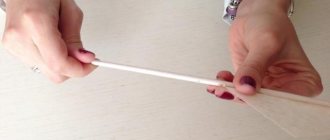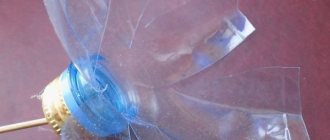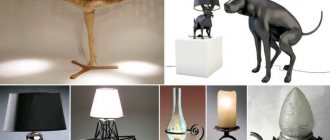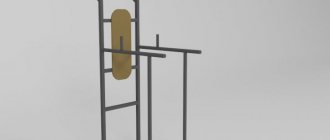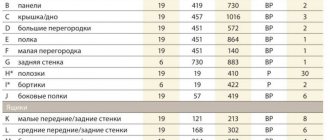One of the most important criteria for the effectiveness of video surveillance is sufficient illumination. However, not all objects have the possibility of using lamps. In such a situation, IR illumination comes to the rescue. Let's consider what types of it exist, when is the best time to use it, what are the models designed for video cameras, what types of IR illuminators are there and what are their advantages, as well as how to make an IR device with your own hands and what you will need for this.
Main characteristics
An IR illuminator is a special device that operates exclusively in the infrared spectrum due to the presence of 1 or more lamps. This advantage makes all dark objects visible to the outdoor CCTV camera. Backlighting is a very important component, since outdoor video cameras can normally record images only if there are effective light rays that bounce off various objects, thereby making the picture clearer. Without the necessary lighting, objects in the picture will be blurry and gray.
The IR illuminator consists of the following parts:
- A panel that has light-emitting diodes in its structure. This element is necessary to ensure normal operation of the device even with minimal or no lighting.
- Light filter. A special filter is needed to unmask the device. The function of the filter is to completely absorb the visible component of infrared radiation.
- Sealed housing. Typically, outdoor surveillance cameras are installed outdoors; the entire electronic circuit requires protection from adverse weather. To do this, the device is placed in a sealed housing.
- Power driver. This device is necessary so that the camera can be connected to a 220 V network, since the light-emitting diode itself is powered by a small amount of energy.
Features of work
There is nothing complicated in the operation of an infrared lamp, which is used for outdoor video surveillance. Often cameras at night without additional lighting cannot form a clear picture. A budget option is to install an infrared spotlight. Thanks to the photosensitive camera sensor, this device is capable of clearly recording both the area visible to the camera and has the ability to intercept the infrared range. Thus, the camera is able to show a very clear picture of the entire area in which the video is being filmed.
IR illumination has a number of features that a potential buyer needs to know about:
- The power of the floodlight LEDs is not enough to increase the video surveillance range.
- Do not rush to install more powerful lighting, as this option is considered uneconomical and may result in unplanned waste. For example, after installing more powerful equipment, the owner will have to purchase power supplies and strengthen the power transmission line.
These features enable a conventional camera, the structure of which includes IR LEDs, to capture images of objects with a range of only 10-20 meters. An outdoor camera under such circumstances does not include the formation of images of additional ranges, but can only provide a view of a limited area. As for external sources of illumination, things are much better with this solution. An IR illuminator is a huge number of LEDs that can efficiently use the power of the power source. With such a device, you don’t have to spend a lot of energy to illuminate a large area.
Disadvantages and advantages
Like any technological device, an IR illuminator has its pros and cons in its application. Here's what you need to know about the benefits of this device:
- low energy consumption;
- high wear resistance;
- safety;
- optimal level of range.
Infrared lighting also has its disadvantages. Touching on this issue, it is worth saying that this type of lighting is incompatible with color CCTV cameras. Also, the operation of an outdoor camera directly depends on weather conditions and often requires regular cleaning of the glass from various contaminants caused by external environmental factors.
It is also worth emphasizing that in the dark the camera may be visible due to the fact that the LEDs have a red tint at night. Manufacturers of infrared spotlights have repeatedly indicated that the spotlights can heat up during camera operation; this indicator is quite normal. Before use, the owner is recommended to adjust the brightness and set the required contrast.
What's the idea?
In general, the idea was born during a regular get-together with friends about how different materials in different ranges of colors would shine through the fabric. Yes, yes, exactly like that, if you know what I mean ;). But in reality it turned out that looking at the world around us is much more interesting than trying to see underwear through clothes in IR rays (imagination is better). And somehow I’ve already become too old for such entertainment.
At this gathering we had a CCTV camera that can record at night and is sensitive to the infrared range. It gave excellent resolution and the article might not have appeared, but this camera did not have a filter that would cut off visible light and leave only IR. In principle, such a filter can be obtained, and those who are thinking of repeating a similar craft can look for it at well-known auctions. Therefore, a slightly different path was chosen - to take an infrared currency detector and convert it into a similar camera. Moreover, there is everything we need for our purposes, and even a display.
How to do it yourself?
The diagram for making IR illumination with your own hands is quite simple; it is a clear linear structure that connects several elements together in parallel.
- Connecting diodes in a certain sequence. The number of diodes is directly related to the voltage of the power supply.
- The use of resistors, which also need to be connected in a chain order. They are necessary to limit the current.
To gradually increase the power of the spotlight, it is imperative to connect elementary lines consisting of a resistor and diodes. At the next stage, the finished structure should be connected to a power supply or battery. This principle of creating a backlight with your own hands allows you to build a constant power supply circuit. This backlight is considered a reliable option for an outdoor surveillance camera.
Very often, owners of such cameras are faced with faulty image transmission, as well as problems responding to requests. First you need to identify the cause, in this case there may be several of them:
- burnout of the electronic control board;
- problem caused by a damaged network cable.
After identifying the problem, you can repair the CCTV camera yourself by carefully replacing the faulty part.
The video explains how IR illumination works for CCTV cameras.
Operation of video surveillance systems involves providing round-the-clock monitoring of the protected area.
If the configuration is incorrect, a problem with video quality at night may arise. Poor images can be obtained by cameras installed in enclosed spaces where the lights are turned off or on the street where the use of bright visible light sources is undesirable (sleeping areas).
There are several solutions to this problem:
Where are lamps based on infrared illumination useful?
In order to conduct video surveillance in conditions where there is no ultraviolet radiation or illumination, or where it is impossible to draw attention to the object of video recording and it is necessary to hide the fact of video surveillance, modern technologies based on infrared illumination come to the rescue.
IR illuminators based on LEDs are compact, there is no difficulty in installation, perhaps the only disadvantage is that they cannot be run directly from 220V, but the power supply easily solves this problem. So, let's figure out what an IR illuminator is. This is a special device equipped with LED emitters operating in the infrared light spectrum. Why is this needed - the infrared spectrum is invisible to the human eye, like ultraviolet, and if you use a video camera sensitive to this very infrared spectrum, the output will be a high-quality image shot in a completely dark place. As an example, some criminals decided to rob an unguarded warehouse. Having walked past several times and not seeing the motion sensors go off and the lights come on, full of confidence in their impunity, they begin to break into the premises. But they do not know that at this time, completely invisible to them, they are illuminated by an IR illuminator for a special video camera with sensitivity to the infrared spectrum. The result is that if a camera films online in a security room, the guard at the remote control will simply call the police, thereby preventing damage to the protected enterprise.
Main characteristics
Length of IR rays. Humans see light in the range of 40-700 nm (nanometers). Most models of IR illuminators generate radiation with a length of:
- 730-750 nm;
- 800nm;
- 870-880nm;
- 930-950nm.
Halogen lamp heater
The simplest stove is assembled on the basis of one 1 kW halogen lamp.
To do this you will need three things:
- sealed metal container or galvanized barrel, can, etc.
- brick
- 1000W halogen
Place this lamp inside the container on a brick and close the “blower”, so to speak.
The heating temperature of the wall surface with a container size of 400 * 400 * 600 mm will reach 80 degrees. The maximum temperature of the heated floor does not exceed 30C.
Eighty is definitely too much, so it’s better to take a 500 W halogen or connect two in series at 1 kW. In this case, heating the oven walls will be optimal - 60 degrees.
To mount the lamp, use a special ceramic socket.
it's ceramic. The brick on which this “beast” lies heats up to 300 degrees!
As you understand, the connection wires must be thermal.
If you open the “supercharger” of such a heater, the image from the inside will resemble a miniature nuclear reactor with a single fuel element - halogen, lying on a brick.
In addition, due to the low power, all this is connected through a regular socket with a plug. You will be shocked by the amount of heat this design can generate.
By the way, it is very convenient to dry clothes and shoes on it.
There is only one big BUT. This is the service life of such a lamp in a confined space without normal cooling conditions. I can assure you that this will be very disappointing.
Application area
The use of CCTV cameras with IR illumination depends on the effective illumination distance of the control area. All IR sources are divided into 3 groups:
- Near – 1.5-10m;
- Medium – 25-60m;
- Distant – 80-350 m
Near IR illumination is advisable to use in the following cases:
- Video intercom calling panels;
- Additional lighting for electronic video eyes;
- Fully functional lighting for hidden video surveillance systems;
- As a duty “dark lighting” in 24-hour video surveillance systems.
Medium and long-range spotlights are recommended to be used:
- The main source of lighting for outdoor CCTV cameras monitoring the area around residential buildings;
- Illumination for video cameras of security systems of cinemas, nightclubs and other establishments with similar specific lighting;
- Illumination for monitoring registration numbers on the highways.
Motion sensor device
The design of the sensor contains two parts - a fixed one, which is attached to the surface, and a movable one. The moving part has two degrees of freedom and can rotate 30-400 in horizontal and vertical planes.
When disassembled, the LX-02 motion sensor looks like this:
View of boards from the parts side
View from the back side (from the soldering side):
View of the motion sensor boards from the solder side
The device uses the following main parts:
- The chip is LM324, these are four operational amplifiers in one package. The datasheet can be downloaded here: • LM324,224,2902 Operational Amplifiers.pdf / , pdf, 134.11 kB, downloaded: 3171 times./
- motion sensor – PIR D203S or 1VY7015
- transistor type S9013 - bipolar medium power. The datasheet can be downloaded here: • S9013 / , pdf, 62.29 kB, downloaded: 1595 times./
- relay SHD-24VDC-FA.
On the side of the microcircuit key there is a light control, next to it there is an on-time control.
DIY IR spotlight
The easiest way to make IR illumination for a video surveillance camera with your own hands is to solder IR LEDs - TSAL5100 - into the matrix of the LED spotlight instead of conventional LEDs.
high-quality and reliable IR illuminators for CCTV cameras with your own hands . The purchase of factory-made devices is quite affordable both in terms of cost and the ability to select optimal performance characteristics.
A video surveillance system of a modern enterprise cannot be complete without monitoring the surrounding area. Filming at night can significantly reduce the risk of vandalism, theft and break-ins.
IR floodlights for video surveillance guarantee uniform illumination of the territory and allow you to save money on the purchase of cameras with powerful illumination. You can assemble such a device for domestic use yourself.
Heating element connection: soldering, insulation
To connect the power wire to the heating element you will need a soldering iron, solder and flux. First, you need to burn a hole in the film in the area of the copper bus, which protects it on both one side and the other. This should be done as close to the bottom edge as possible so that the wire does not dangle. In places where the film has been removed from the tires, it is necessary to apply a little flux, and then a thin layer of solder. The ends of the wires need to be tinned, and then soldered to the busbars - one to the right, the other to the left. For those who have held a soldering iron at least once in their hands, this work will not be difficult.
The wires must be soldered to the copper busbars of the heating element
Insulation of the resulting contacts and other live parts
To ensure that the resulting connections are safe, they must be insulated. The best option here is to use molded raw rubber. At the same time, there is no need to remove the top protective layer from it.
Having cut pieces of suitable size, you need to press them tightly to the connection, completely closing the contact. Raw rubber sticks well, so you should be careful. It will no longer be possible to peel it back, only together with a piece of copper contact bar.
Connections are insulated using a piece of raw rubber
In a similar way, it is necessary to close the ends of the tires where the film was cut off when laying the heated floor. The fact is that in these places there also remains a bare current-carrying contact, which means there is a danger of electric shock. And this is fraught not only with injuries, but also with death.
Similar to soldered contacts, the cut points where the busbar is exposed are also insulated.
Operating principle of IR illuminators
The mechanics of operation and the idea of using an IR lamp for video surveillance are quite simple. At night, with low levels of natural light, the camera cannot form images because the sensor elements simply do not change their characteristics.
The option of organizing a constant background of the visible spectrum is quite expensive. It will require the use of powerful spotlights, will entail the cost of purchasing equipment, and will include the cost of constant maintenance in the form of replacing burnt out lamps or LED cells.
Picture of CCTV camera image with IR illumination
Important!
Don't forget about the cost of paying for electricity.
Infrared illumination for video surveillance uses the properties of the camera's light-sensitive sensor. This element is capable of recording not only waves of the visible part of the spectrum, but also capturing the IR range.
As a result, you can get a fairly clear and contrasting picture of the illuminated area. But there are several features that characterize IR illumination for a video surveillance camera.
- The LED power is not sufficient to expand the observation area.
- Installing a more powerful backlight may entail the need to equip the camera with expensive power supplies, strengthening power transmission lines, which will entail an increase in the cost of the technical solution.
Due to the difficulties listed above, the average camera, which is equipped with IR LEDs for video surveillance, can form an image of objects located 10-20 meters away, as well as provide an overview of a limited area.
The situation looks different with the use of external illumination sources. The infrared illuminator consists of a large number of LEDs that optimally use the power of the power source.
IR illuminator device for CCTV camera
Such a device is capable of illuminating a large area without significant waste of energy. At the same time, a do-it-yourself infrared floodlight for video surveillance can be built on two basic mechanics:
- with constant voltage supply to the LEDs. This solution is characterized by energy consumption, which increases linearly depending on the number of installed emitters. In addition, the service life of semiconductor elements is limited; it is necessary to organize heat removal;
- Switching power circuits are much more practical. They are somewhat more complex in hardware implementation, but are easy to configure. By installing IR LEDs for video surveillance with your own hands and adjusting the circuit until you get a high-quality picture from the camera, you can easily achieve reduced energy consumption and low heat generation. The lifespan of semiconductor elements also increases significantly.
At the same time, the general mechanics of using a homemade device are similar to those of infrared illumination for CCTV cameras. A free-standing spotlight provides uniform illumination of a large monitoring area, guarantees the identification of objects at a considerable distance, and offers optimization of energy consumption and the cost of the system as a whole.
How to make IR illumination for video surveillance with your own hands
The simplest diagram for constructing IR illumination for a video surveillance camera with your own hands looks like a linear structure where the following are connected in parallel:
- series-connected diodes, the number of which is selected in accordance with the voltage of the power source;
- resistors connected in series, acting as a current limiter, the value of the elements is selected in accordance with the characteristics of the semiconductor light emitters used.
To increase the power of the spotlight, the required number of elementary lines of diodes and a resistor are connected in parallel. After this, the entire structure is connected to a battery or voltage conversion unit.
Electronic circuit for IR illumination of a video surveillance camera for DIY production.
This circuit implements the principle of constant power supply. Such IR illumination for a video surveillance camera is reliable, but as the power increases, problems arise with overheating of the structure enclosed in the housing, and the required voltage source also becomes more expensive. A circuit with pulsed diode control looks much more attractive.
NE555 integrated timer circuit
The pulsed diode power supply circuit is not only characterized by reduced consumption and therefore high efficiency, but is also the best solution for powering the system from batteries.
This DIY IR illumination for a camera works according to the following mechanics:
- the basis of the circuit is an automatic pulse generator assembled on the NE555 element;
- the carrier frequency is set using a chain of resistors; for ease of adjustment, one of them is variable;
- power is transmitted to the diodes by a transistor switch;
- To limit the load current, a resistor is paired with each diode.
Setting up the circuit is very simple. When power is applied, the autogenerator generates pulses, the power of which is increased by a transistor switch.
Electronic circuit of an IR illuminator for video surveillance based on the Ne555 integrated timer
The whole setup comes down to changing the resistance of the variable resistor to select a frequency so that the picture from the camera does not flicker or blink.
Advantages of using IR illuminators
In addition to the already mentioned possibility of expanding the night shooting area, free-standing IR illuminators allow you to:
- slightly increase the consumption of the existing system or optimize the performance of the one being developed;
- reduce overall equipment costs;
- minimize interference with existing energy supply networks;
- ensure high-quality and uniform illumination of a large area;
- improve the detail of observed objects at a great distance;
- increase the maximum motion detection range.
The average individual who wants a cheap and reliable solution for night video surveillance can easily use a pair of a homemade IR illuminator and an inexpensive black-and-white camera.
Conclusion
A homemade IR illuminator is a simple and reliable solution. Implementing the mechanics of constant and pulsed power, it is built on common, inexpensive elements and is conveniently configured and regulated.
Such a device will make it easy to solve the issue of night shooting for a private user and can reduce the cost of resources and time when organizing a large-scale video surveillance structure. Even with little skill in working with a soldering iron, almost anyone can assemble an IR illuminator with their own hands.
Tools
Infrared lighting has always been relevant for the development of various security systems, as it allows you to see objects even in complete darkness. Recently, the manifestation of the positive influence of IR light has also been noticed when growing greenhouse plants. The cost of professional equipment is quite high, and the components do not always correspond to the goals set. Therefore, let’s look at how to make an infrared flashlight with your own hands.
Table of contents
Operating principle of an infrared flashlight
First of all, let's define what an infrared flashlight is and for what purposes it is used. Such flashlights provide the opportunity to provide additional illumination of objects for observation using rays in the infrared range.
The light emitted by such a flashlight is invisible to the human eye, but allows you to see the object of interest even in complete darkness due to the use of infrared LEDs. This will be especially relevant for the security sector, because it is difficult to install a powerful spotlight at the site, the operation of which will cause more inconvenience. In this case, it is worth using an infrared illumination flashlight, which has the following number of properties:
Such lighting would be the best choice, since such lanterns have a number of advantages:
Components for assembling an infrared flashlight
Assembling an infrared flashlight with your own hands is not that difficult. To get started, you will need the simplest tools:
- Phillips screwdrivers (various sizes),
- soldering iron with a thin tip, power 60 W,
- infrared LEDs (average cost from 1 dollar per piece),
- wire for supplying power from the LEDs to the battery,
- actually, the battery itself for the IR flashlight
In addition, you should use electrical tape and take a base for the lantern. A simple flashlight that will be converted to infrared will also do. To create such a device, you do not need anything specific; any components can be purchased at your first electrical store.
The process of assembling an infrared flashlight
Creating an infrared flashlight is also not difficult. In fact, if it is designed on the basis of a simple LED, then it is often enough to replace conventional LEDs with infrared ones by soldering them - and the device is ready. If you want to create a more complex technique, then you will have to carry out a few more manipulations:
- the old flashlight is disassembled and the lens is removed from it (the protective glass, if any, is better to leave),
- power wires are soldered to the infrared LEDs (or LED, if one is used),
- then the second end of the wire is soldered to the battery (battery or rechargeable battery),
- The final step will be to isolate the connections. When soldering, it is advisable to cover the soldered elements using heat shrink tubes; the wires should be secured together with electrical tape.
After the steps have been completed, the infrared flashlight is ready.
Quite often, to effectively observe distant objects, you need to use something more substantial than a simple IR flashlight. For these purposes, it is quite possible to assemble an infrared spotlight. For people unprepared for such work, when the word spotlight is mentioned, they may associate it with bulky lighting equipment, but this is not the case. Roughly speaking, floodlights are powerful infrared lights with a significant number of infrared LEDs.
The base requires a housing, which in the future will be an IR illuminator. If you plan to create a low-power lighting device for domestic needs (for example, for night photography), it is not necessary to cover the LEDs with protective glass; otherwise, if you intend to use the spotlight as a lighting device for video surveillance systems, it is highly recommended to use a ready-made design in a waterproof case.
- in the selected case (let's say it looks like a plastic box), marks are made (for example, 8-10 for the same number of LEDs in each row, of which there will also be several). The marks should be at an equal distance from each other (it is optimal to choose a difference of 5 mm),
- Using a drill and a low-power drill or screwdriver, holes are drilled at the indicated marks for inserting LEDs. On the other side of the case, you should also consider the fastening system. If an amateur IR illuminator will be connected to a camera or video camera, then it is enough to make one hole into which a bolt will be inserted and subsequently tightened with a nut,
- the breadboard (for mounting LEDs) is cut using simple scissors to the dimensions required for installation,
- then infrared LEDs are placed in it so that the cathodes and anodes are arranged in a row, and the IR LEDs themselves fall into the drilled holes in the box body,
- the legs of the LEDs are bent in one line for further soldering, each row separately,
- using a soldering iron (a model with a thin tip and a heating power of 60 W is optimal), the tracks of the LED legs are soldered into lines,
- After these steps, the black power wire is used to connect the anode tracks (for example, if the IR LEDs are arranged in three rows and, accordingly, will have six rows of legs on the back side of the board, then the anodes are three rows. A wire is soldered to the outermost of them, with the rest it is connected in rows using a jumper),
- a resistor with a resistance of 220 Ohms should be soldered to the cathodes, after which the resistor jumpers are connected into a single unit and the red power wire is soldered to them,
- the battery must be connected on the other side of the cables,
- After these steps, the body is assembled and the amateur IR illuminator, assembled with your own hands, is ready.
Read also: How to make facial wash at home with your own hands.
It is advisable to add the ability to turn off the power supply to the LEDs. Despite their low power consumption, it is simply not practical to supply power when there is no need for IR illumination (especially during daylight hours).
Application areas of infrared flashlight
As has already been written above, the main environment for using infrared flashlights and floodlights lies in the security sector. Flashlights are best suited for the following purposes:
- as a backlight at night in front of intercoms and door video eyes, in order to be able to directly see a person,
- illumination of internal video surveillance systems (especially important for small rooms),
- additional lighting of the space at night (for external surveillance cameras),
- infrared spotlights (excluding the amateur class, which in terms of operating range should be classified as IR flashlights) are used in cases where it is necessary to ensure a good degree of observation of objects at medium (from 20 to 50 meters) and long distances (up to 400 meters) ,
- providing effective lighting for video surveillance systems when protecting large buildings,
- viewing the protected perimeter,
- additional lighting for night vision devices,
- if it is inadmissible to use spotlights, which may cause inconvenience when working with them.
Separately, it is worth highlighting another interesting aspect of the use of infrared flashlights, since we are talking about video surveillance. For some reason, not every person wants a video camera to record him. In this case, there is a simple and extremely cheap option to provide yourself with camouflage and hide your face from CCTV cameras. To do this, it is enough to create a simple device that works on the principle of an infrared flashlight. According to the indicated method of assembling such a flashlight, several infrared LEDs connected to a nine-volt battery should be attached to a headdress (an ordinary cap will do). Such a system will not stand out at all in its appearance, however, for video surveillance cameras, the upper part of a person’s body will appear as a bright spot in which it will be impossible to distinguish a face.
Attackers may not rush to rub their hands happily; this method only works against budget CCTV cameras; more expensive models are not so sensitive to the influence of IR radiation on them. Therefore, such tricks will not affect a good video surveillance system; a person’s face will be clearly visible even when using several rows of IR LEDs.
Safety precautions when working with an infrared flashlight
It is important to remember that the use of this technology can be harmful to human health if safety requirements are not followed correctly.
- Infrared radiation from powerful sources, when directly hitting the retina of the eye, can dry out the mucous membrane, which will lead to eye fatigue and even pain. Therefore, when using a device such as an infrared laser flashlight, you should never point it at a person’s eyes (unless such a flashlight is used for the purpose of self-defense from an attacker),
- contacts through which power passes - should be reliably isolated from possible exposure to moisture, which will cause corrosion or short circuit of the circuit,
- soldering of contacts should be carried out with well-functioning soldering equipment to prevent the possibility of burns during work,
- you should try to avoid direct exposure of infrared LEDs to sunlight to avoid overheating,
- The infrared equipment housing must be securely assembled to prevent contamination or moisture from entering the system.
These devices have recently become increasingly popular due to their quality and long service life. Low energy consumption, budget cost of infrared lighting equipment, combined with its capabilities, will be a convincing argument in favor of choosing such devices to ensure safety. The assembled amateur systems will allow you, without extra costs, to have, in addition to your camera or video camera, full-fledged auxiliary equipment for taking photos and videos at night.
Assembling a homemade infrared heater
Based on all this, we need to assemble our heater from light bulbs. Let's move on to practice.
If your work area that needs to be heated is 3–4 m2, then assemble a 300 W heater.
This will require 6 lamps with a power of 150 W. That is, three consecutive pairs of 100 W each.
They are assembled onto a frame consisting of a metal or aluminum corner.
Arrange the light and heat sources in the frame as shown below.
At the same time, select the distance between adjacent bulbs so that you can easily replace the burnt-out copy with a new one. Even after a hundred years.
To do this, there will be enough space of 1 cm between the bottles. The parts of the frame are connected to each other with bolts or rivets.
You will also need to attach two aluminum strips inside it on which the reflector or reflector will sit. These strips will add rigidity to the entire structure.
Now the most important thing is to make the reflector correctly. The familiar parable form is not very effective.
Models in the shape of a biparabola cope much better with their responsibilities. Here the whole difference is in the reflection of the rays, which in the second case are mostly not reflected in the lamp, but go out.
Aluminum cans are ideal as a material for manufacturing. Cut off the bottom and top of the can.
And unfold the walls and fold them in the middle. In this case, leave a margin of 1 cm on one edge for the other fold. After all, somehow you need to connect the halves of two cans together.
1 of 2
Secure them with rivets. To avoid tearing the thin aluminum, pre-install washers on both sides.
Accordingly, you must have a one-piece reflector for 4 cylinders.
Then slide the reflector onto the frame and insert the rivets. First in the center of the side, and then along the edges.
Well, don't forget about the two stripes in the center of the frame.
Now you need to insert the bulbs themselves into this structure. However, do not let them touch the reflector. There should be a distance of at least 1.5-2 cm from it.
And this is where aluminum comes to the rescue. Namely: thin strips nine centimeters long.
Make sure you mark where the cartridge attaches to the bar, otherwise you will not be able to route the power cords inside.
Attach the strips to the frame and install the cartridges on them.
After this, you can screw in the light bulbs themselves.
All that remains is to connect the wires.
Simple waterproof flashlight
A simple waterproof flashlight can be made using a film can. We will need: a new can of photographic film, a 3 V LED, 2-3 reed switches, a 3 V lithium battery of size 2032 , cotton wool (case filler), a battery socket from an old flashlight. To ensure water resistance, it is necessary that there are no holes in the flashlight body. So, as a switch, you can use sealed contacts. For reliable operation, it is better to take 2-3 reed switches, since when turning along the longitudinal axis, the sensitivity of the reed switch changes. So, let's assemble the flashlight according to the diagram.
Optimal heating power
To assemble a lamp heater, it is best to use 150W models
Just note that after the introduction of a law prohibiting the production of conventional incandescent lamps of more than 100W, they began to be sold under the name “heat emitters”
With their sequential connection scheme, even two copies, you can immediately feel the radiated heat. At the same time, they do not blind the eyes.
The current in such a circuit at the same voltage will be 420mA. This means that two lamps consume about 100 W in total, and most of them are used for heating.
You can compare what power infrared heaters are sold for and what area they are designed for. The ratio for conventional models is 100W per 1m2.
Oil radiators have almost the same indicators.
That is, in any case, watts turn into heat. Only specialized infrared models will have more directed radiation to a specific point or area, while your homemade product will have a wider angle.
By the way, these 100 W/m2 are taken from SNiP for premises insulated according to all standards. This is the optimal power for all heaters in central Russia.
For northern latitudes, including cold, uninsulated garages, the values will be higher. If, for example, the heat loss in a garage is 1000 W/hour, and you heat it at 300 W, then your temperature will never rise.
But if the ideal heat loss is close to zero, then 100 W will be enough to create a bathhouse inside.
This power also depends on the height of the ceilings (the average calculated one is up to 3 m).
